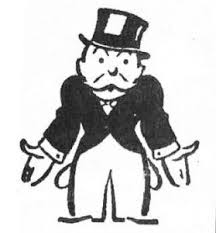 A recent poll suggests nearly half of Canadians surveyed in January 2016 are within $200 per month of being unable to pay for their bills and make their debt payment. The Ipsos Reid survey also found about one-quarter of the 1,582 people who responded to the poll were already unable to cover their bills and debt payments.
A recent poll suggests nearly half of Canadians surveyed in January 2016 are within $200 per month of being unable to pay for their bills and make their debt payment. The Ipsos Reid survey also found about one-quarter of the 1,582 people who responded to the poll were already unable to cover their bills and debt payments.
As a collection agency with offices in Edmonton, Calgary and the GTA we recognize that the vast majority of consumers we inevitably end up dealing with are good people, with good intentions that have now simply arrived at the tipping point of having to either try to continue to rob Peter to pay Paul or, in the alternative, to make some hard choices in monthly budgeting in order to honour their outstanding financial obligations.
The online poll was done between Jan. 27 and Jan. 29 for MNP Debt, which provides licensed trustee services in six provinces, from Quebec to British Columbia.
MNP says the poll found that 31 per cent of respondents said any increase in interest rates could move them towards bankruptcy.
Ipsos Reid conducted the poll about a week after the Parliamentary Budget Office issued a report on Jan. 19 that said Canada has seen the largest increase in household debt relative to income of any G7 country since 2000.
The survey also followed Bank of Canada’s decision to keep a key lending rate at a historically low level of 0.5 per cent on Jan. 20, as the central bank lowered economic growth estimates for 2015 and 2016.
Although polling industry’s professional body, the Marketing Research and Intelligence Association, says online surveys cannot be assigned a margin of error as they are not a random sample and therefore are not necessarily representative of the whole population, we can add to the narrative that as a third party debt collection agency, and from what we are witnessing, a higher percentage of our consumer portfolios clearly appear to be falling into the “rob Peter to pay Paul” debt payment cycle.
Once considering the above the writer wonders, is this present dynamic the result of an income problem or spending problem?